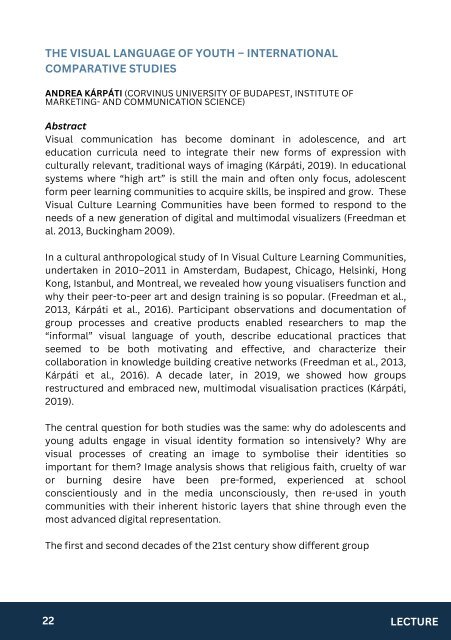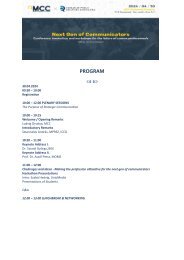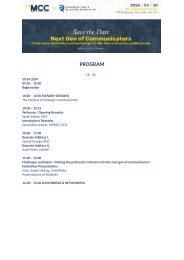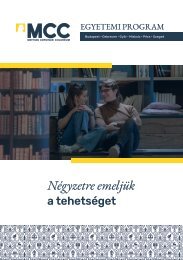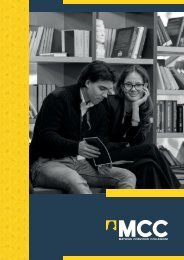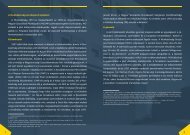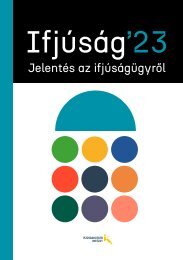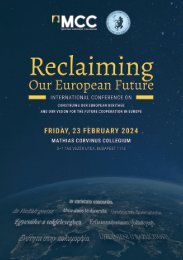Clout Culture - Youth Cultures in Changing Societes Conference
Create successful ePaper yourself
Turn your PDF publications into a flip-book with our unique Google optimized e-Paper software.
THE VISUAL LANGUAGE OF YOUTH – INTERNATIONAL<br />
COMPARATIVE STUDIES<br />
ANDREA KÁRPÁTI (CORVINUS UNIVERSITY OF BUDAPEST, INSTITUTE OF<br />
MARKETING- AND COMMUNICATION SCIENCE)<br />
Abstract<br />
Visual communication has become dom<strong>in</strong>ant <strong>in</strong> adolescence, and art<br />
education curricula need to <strong>in</strong>tegrate their new forms of expression with<br />
culturally relevant, traditional ways of imag<strong>in</strong>g (Kárpáti, 2019). In educational<br />
systems where “high art” is still the ma<strong>in</strong> and often only focus, adolescent<br />
form peer learn<strong>in</strong>g communities to acquire skills, be <strong>in</strong>spired and grow. These<br />
Visual <strong>Culture</strong> Learn<strong>in</strong>g Communities have been formed to respond to the<br />
needs of a new generation of digital and multimodal visualizers (Freedman et<br />
al. 2013, Buck<strong>in</strong>gham 2009).<br />
In a cultural anthropological study of In Visual <strong>Culture</strong> Learn<strong>in</strong>g Communities,<br />
undertaken <strong>in</strong> 2010–2011 <strong>in</strong> Amsterdam, Budapest, Chicago, Hels<strong>in</strong>ki, Hong<br />
Kong, Istanbul, and Montreal, we revealed how young visualisers function and<br />
why their peer-to-peer art and design tra<strong>in</strong><strong>in</strong>g is so popular. (Freedman et al.,<br />
2013, Kárpáti et al., 2016). Participant observations and documentation of<br />
group processes and creative products enabled researchers to map the<br />
“<strong>in</strong>formal” visual language of youth, describe educational practices that<br />
seemed to be both motivat<strong>in</strong>g and effective, and characterize their<br />
collaboration <strong>in</strong> knowledge build<strong>in</strong>g creative networks (Freedman et al., 2013,<br />
Kárpáti et al., 2016). A decade later, <strong>in</strong> 2019, we showed how groups<br />
restructured and embraced new, multimodal visualisation practices (Kárpáti,<br />
2019).<br />
The central question for both studies was the same: why do adolescents and<br />
young adults engage <strong>in</strong> visual identity formation so <strong>in</strong>tensively? Why are<br />
visual processes of creat<strong>in</strong>g an image to symbolise their identities so<br />
important for them? Image analysis shows that religious faith, cruelty of war<br />
or burn<strong>in</strong>g desire have been pre-formed, experienced at school<br />
conscientiously and <strong>in</strong> the media unconsciously, then re-used <strong>in</strong> youth<br />
communities with their <strong>in</strong>herent historic layers that sh<strong>in</strong>e through even the<br />
most advanced digital representation.<br />
The first and second decades of the 21st century show different group<br />
22<br />
LECTURE


